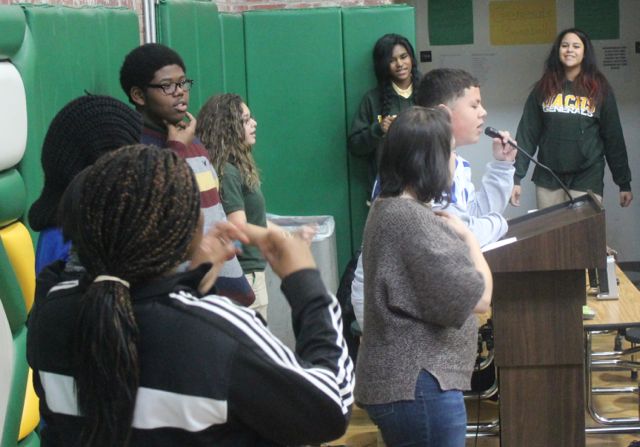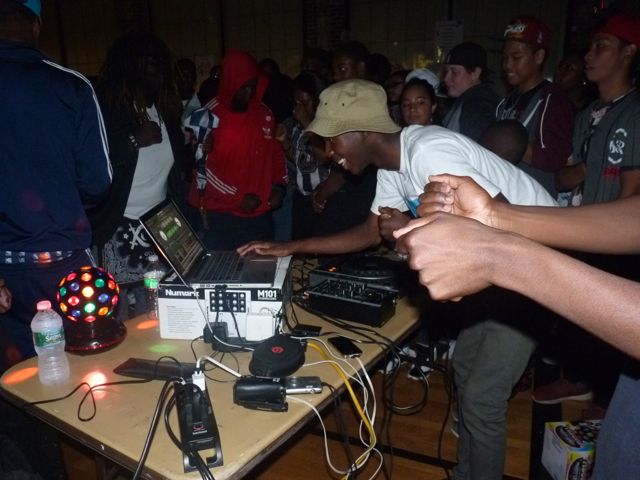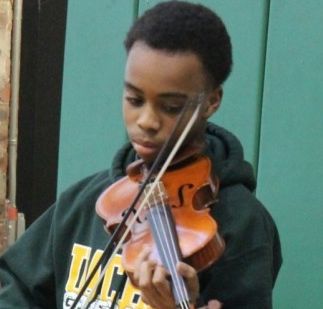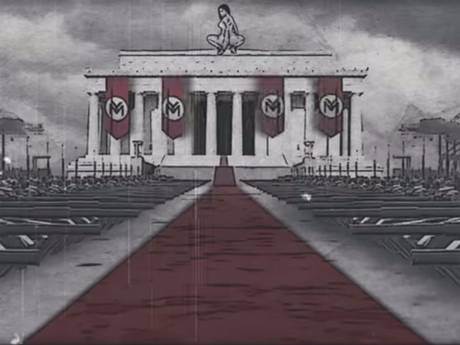Fashion has always been a form of expression and a way for individuals to differentiate themselves from others. Throughout the 20th century, fashion changed and shaped into what it is now. Long gowns turned into short cocktail dresses, several styles of jeans formed, and much more happened. Today’s fashion trends can all be connected to the past.
In the 1900s, several types of clothing were worn throughout the day, from morning to evening. Women, at the time, still wore tightly laced corsets and their dresses were tailored to show the hourglass figure produced by it, according to the Rhode Island School of Design’s Tirrochi Project website. Men wore suits with slender trousers and wide shoulder pads, according to Peggy Whitley from the Lone Star College-Kingwood Library.
Later on, women’s dresses became looser and were designed to have high waistlines. However, the clothes for men did not change much. Teenagers’ fashion resembled the styles of adults and they didn’t have any trends of their own, according to Lindsay Mathieson, co-editor of SchoolNet News Network from Port Hardy Secondary School in British Columbia.
Twenty years later, clothing for women had changed drastically from the tight-fitted gowns of the 1910s to a loose, short dress that fell just above the knees, according to Samantha and Gary Castillo, creators of the website Fashion Blog Life. The 1920s was an era in which women had more freedom to do what they want. They began wearing pants and shorter skirts. Corsets were also abandoned in favor of bras. Women aimed to look more masculine by cutting their hair to a short length and flattening their chest and hips. Because of this, the “bob cut” became a popular hairstyle among women. Fashion in the 20s mostly centered around the designs of Coco Chanel, Jean Patou and Elsa Schiaparelli since they suited the younger generation’s new tastes for form-fitting and innovative fashions, according to the Tirrochi Project.
Fast-forwarding to the 1950s, teenagers, who had usually followed the trends of adults, were now taking fashion into their own hands, according to the Australian educational website Skwirk. They began copying the styles of famous actors and musicians such as Elvis Presley, Marilyn Monroe and Lucille Ball. Teenage girls wore full high-waisted skirts that fell right below their knees and a cardigan. To complete this look, they would also wear ballet slippers or flats with socks. Boys would grease up their hair and put on jeans and a black leather jacket. It was fine for a girl to wear jeans as well, but they were considered too casual and appropriate only to be worn at home. Besides that, boys also dressed in the “Teddy Boy” look, which was a long, single-breasted suit with velvet or satin trims. Teenagers made fashion of the 50s bold and rebellious.
People in the 60s had more freedom to choose their own style instead of adopting major trends, according to “The 20th Century of American Fashion,” a thesis written by Alison Krass from Western Connecticut State University. Bell-bottomed jeans became very popular during this period and it could be worn by anyone at any time. Fashionable clothing was mostly made for older women, but eventually it was also created for teenagers as well. Teenage girls began wearing short shorts and miniskirts as well as fake eyelashes. The hippie fashion was so popular during this decade that it lasted well into the 70s. Clothes that made up hippie fashion were long skirts, peasant blouses and denim jeans. The 60s was filled with eccentric and erratic styles.
The 1970s had a wide selection of unique styles people could choose from, according to Michelle Waltos from the University at Buffalo. The hippie fashion was still very popular, but the disco style soon replaced it. Glamorous and glitzy clothes, which were made with sequins and shiny fabrics like polyester and rayon, made up this style. Some of the trends that came out from the disco style are halter tops, hot pants and platform shoes. The disco style faded into the late 70s and punk fashion came into light. People who dressed in punk fashion looked messy and dirty. They wore torn clothes, and had disheveled hair and unclean shoes. Fashion in the 1970s was ever-changing and vibrant.
Compared to the fashion of the 70s, the 1980s were more loud and excessive, according to the Castillos. People showed off their individuality and creativity through the clothes they wore, according to Like Totally 80s, a site dedicated to the 1980s. They sported big hair and large shoulder pads and copied the styles of fashion icons such as Madonna and Michael Jackson. Acid wash jeans were considered to be very trendy, but its popularity died out after a few years. Reebok high-tops, Converse sneakers and jelly shoes were the fads. Many styles of the 80s are becoming popular once again and can still be seen today.
During the 1990s, fashion was a mix of styles from the 60s to the 80s, according to Waltos. Popular clothes from these three eras that lasted into the 90s were babydoll dresses, over-sized shirts, leggings and denim jeans. Also, in this decade, grunge, a combination of punk and goth, was born. Grunge was created as a revolt against conservatism, and the look consisted of a flannel shirt, ripped jeans, a regular t-shirt and sneakers or boots. Grunge was meant to represent a lifestyle of ease and originality. Besides grunge, another iconic trend of the 90s was sagging-jeans, which was influenced by hip-hop. The fashion of the 1990s reflected the imaginative and simple lifestyle of the people.
Today’s fashion consists of new styles and different versions of past trends. People often create their own styles from the clothes of the 70s and the 80s.
“I guess what inspires me is the trends from the 70s and the 80s,” said senior Brianna Hill. “I [would] dress in a lot of 80s wear.”
Senior Tori Wallace said that “everyone has their own personal definition of style.”
“Anything originated from one’s mind is considered unique,” Wallace said.
Junior Andrew Johnson said “everything is fashion” and it is similar to art.
“Art is everywhere,” said Johnson. “[However,] it depends on what people think is in vogue.”
“Fashion is an infinite cycle. The more the cycle continues, the more it morphs into new ways of bringing the past back,” Wallace said.
Categories:
A brief history of 20th century fashion
April 4, 2012
Story continues below advertisement
0




